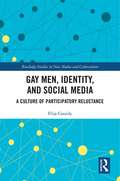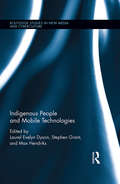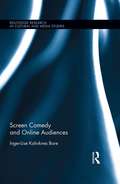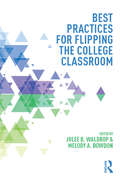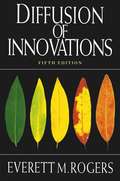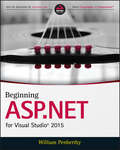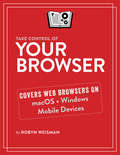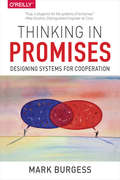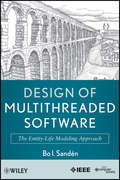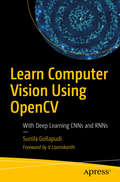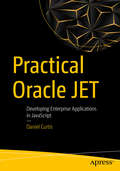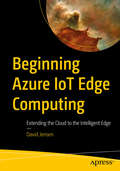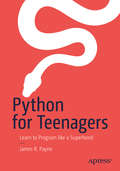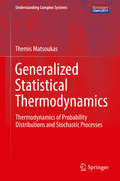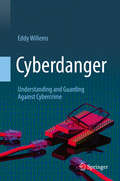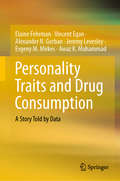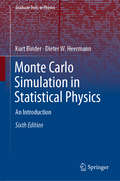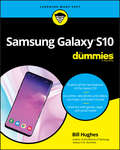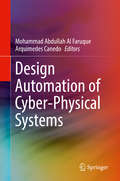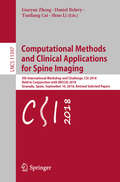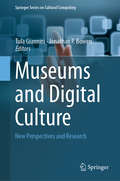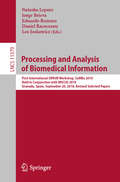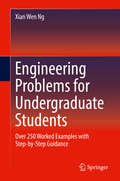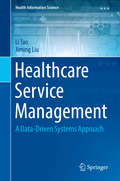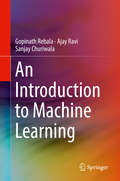- Table View
- List View
Gay Men, Identity and Social Media: A Culture of Participatory Reluctance (Routledge Studies in New Media and Cyberculture)
by Elija CassidyThis book explores how the social and technical integration of mainstream social media into gay men’s digital cultures since the mid 2000s has played out in the lives of young gay men, looking at how these convergences have influenced more recent iterations of gay men’s digital culture. Focusing on platforms such as Gaydar, Facebook, Grindr and Instagram, Cassidy highlights the ways that identity and privacy management issues experienced in this context have helped to generate a culture of participatory reluctance within gay men’s digital environments.
Indigenous People and Mobile Technologies (Routledge Studies in New Media and Cyberculture)
by Laurel Evelyn Dyson Stephen Grant Max HendriksIn the rich tradition of mobile communication studies and new media, this volume examines how mobile technologies are being embraced by Indigenous people all over the world. As mobile phones have revolutionised society both in developed and developing countries, so Indigenous people are using mobile devices to bring their communities into the twenty-first century. The explosion of mobile devices and applications in Indigenous communities addresses issues of isolation and building an environment for the learning and sharing of knowledge, providing support for cultural and language revitalisation, and offering the means for social and economic renewal. This book explores how mobile technologies are overcoming disadvantage and the tyrannies of distance, allowing benefits to flow directly to Indigenous people and bringing wide-ranging changes to their lives. It begins with general issues and theoretical perspectives followed by empirical case studies that include the establishment of Indigenous mobile networks and practices, mobile technologies for social change and, finally, the ways in which mobile technology is being used to sustain Indigenous culture and language.
Screen Comedy and Online Audiences (Routledge Research in Cultural and Media Studies)
by Inger-Lise Kalviknes BoreThe question of why we laugh (or don't laugh) has intrigued scholars since antiquity. This book contributes to that debate by exploring how we evaluate screen comedy. What kinds of criteria do we use to judge films and TV shows that are meant to be funny? And what might that have to do with our social and cultural backgrounds, or with wider cultural ideas about film, TV, comedy, quality and entertainment? The book examines these questions through a study of audience responses posted to online facilities such as Twitter, Facebook, review sites, blogs and message boards. Bore’s analysis of these responses considers a broad range of issues, including how audiences perceive the idea of "national" comedy; what they think of female comedians; how they evaluate romcoms, sitcoms and web comedy; what they think is acceptable to joke about; what comedy fans get excited about; how fans interact with star comedians; and what comedy viewers really despise. The book demonstrates some of the ways in which we can adapt theories of humour and comedy to examine the practices of contemporary screen audiences, while offering new insights into how they negotiate the opportunities and constrictions of different online facilities to share their views and experiences.
Best Practices for Flipping the College Classroom (Best Practices in Online Teaching and Learning)
by Julee B. Waldrop Melody A. BowdonBest Practices for Flipping the College Classroom provides a comprehensive overview and systematic assessment of the flipped classroom methodology in higher education. The book: Reviews various pedagogical theories that inform flipped classroom practice and provides a brief history from its inception in K–12 to its implementation in higher education. Offers well-developed and instructive case studies chronicling the implementation of flipped strategies across a broad spectrum of academic disciplines, physical environments, and student populations. Provides insights and suggestions to instructors in higher education for the implementation of flipped strategies in their own courses by offering reflections on learning outcomes and student success in flipped classrooms compared with those employing more traditional models and by describing relevant technologies. Discusses observations and analyses of student perceptions of flipping the classroom as well as student practices and behaviors particular to flipped classroom models. Illuminates several research models and approaches for use and modification by teacher-scholars interested in building on this research on their own campuses. The evidence presented on the flipped classroom methodology by its supporters and detractors at all levels has thus far been almost entirely anecdotal or otherwise unreliable. Best Practices for Flipping the College Classroom is the first book to provide faculty members nuanced qualitative and quantitative evidence that both supports and challenges the value of flipping the college classroom.
Diffusion of Innovations, 5th Edition
by Everett M. RogersNow in its fifth edition, Diffusion of Innovations is a classic work on the spread of new ideas.In this renowned book, Everett M. Rogers, professor and chair of the Department of Communication & Journalism at the University of New Mexico, explains how new ideas spread via communication channels over time. Such innovations are initially perceived as uncertain and even risky. To overcome this uncertainty, most people seek out others like themselves who have already adopted the new idea. Thus the diffusion process consists of a few individuals who first adopt an innovation, then spread the word among their circle of acquaintances--a process which typically takes months or years. But there are exceptions: use of the Internet in the 1990s, for example, may have spread more rapidly than any other innovation in the history of humankind. Furthermore, the Internet is changing the very nature of diffusion by decreasing the importance of physical distance between people. The fifth edition addresses the spread of the Internet, and how it has transformed the way human beings communicate and adopt new ideas.
Beginning ASP.NET for Visual Studio 2015
by William PenberthyThe complete guide to the productivity and performance enhancements in ASP.NET Beginning ASP.NET for Visual Studio 2015 is your ultimate guide to the latest upgrade of this historically popular framework. Fully updated to align with the vNext release, this new edition walks you through the new tools and features that make your workflow smoother and your applications stronger. You'll get up to speed on the productivity and performance improvements, and learn how Microsoft has committed itself to more continuous innovation by increasing its release cadence for all products and services going forward. Coverage includes Async-aware debugging, ADO.NET idle connection resiliency, managed return value inspection, ASP.NET app suspension, on-demand large object heap compaction, multi-core JIT and more. The news of an off-cycle update to ASP.NET came as a surprise, but its announcement garnered cheers at the 2014 Microsoft BUILD conference. This guide shows you what all the fuss is about, and how Microsoft overhauled the latest ASP.NET release. Get acquainted with the new developer productivity features Master the new tools that build better applications Discover what's new in Windows Store app development Learn how Microsoft fixed the issues that kept you from v5 Over 38 million websites are currently using ASP.NET, and the new upgrade is already leading to increased adoption. Programmers need to master v6 to remain relevant as web development moves forward. Beginning ASP.NET for Visual Studio 2015 walks you through the details, and shows you what you need to know so you can get up and running quickly.
Thinking in Promises: Designing Systems for Cooperation
by Mark BurgessImagine a set of simple principles that could help you to understand how parts combine to become a whole, and how each part sees the whole from its own perspective. If such principles were any good, it shouldn't matter whether we're talking about humans on a team, birds in a flock, computers in a datacenter, or cogs in a Swiss watch. A theory of cooperation ought to be pretty universal, so we should be able to apply it both to technology and to the workplace.Such principles are the subject of Promise Theory, and the focus of this insightful book. The goal of Promise Theory is to reveal the behavior of a whole from the sum of its parts, taking the point of the parts rather than the whole. In other words, it is a bottom-up, constructionist view of the world. Start Thinking in Promises and find out why this discipline works for documenting system behaviors from the bottom-up.
Design of Multithreaded Software: The Entity-Life Modeling Approach
by Bo I. SandenThis book assumes familiarity with threads (in a language such as Ada, C#, or Java) and introduces the entity-life modeling (ELM) design approach for certain kinds of multithreaded software. ELM focuses on "reactive systems," which continuously interact with the problem environment. These "reactive systems" include embedded systems, as well as such interactive systems as cruise controllers and automated teller machines. Part I covers two fundamentals: program-language thread support and state diagramming. These are necessary for understanding ELM and are provided primarily for reference. Part II covers ELM from different angles. Part III positions ELM relative to other design approaches.
Learn Computer Vision Using OpenCV: With Deep Learning CNNs and RNNs
by Sunila GollapudiBuild practical applications of computer vision using the OpenCV library with Python. This book discusses different facets of computer vision such as image and object detection, tracking and motion analysis and their applications with examples. The author starts with an introduction to computer vision followed by setting up OpenCV from scratch using Python. The next section discusses specialized image processing and segmentation and how images are stored and processed by a computer. This involves pattern recognition and image tagging using the OpenCV library. Next, you’ll work with object detection, video storage and interpretation, and human detection using OpenCV. Tracking and motion is also discussed in detail. The book also discusses creating complex deep learning models with CNN and RNN. The author finally concludes with recent applications and trends in computer vision.After reading this book, you will be able to understand and implement computer vision and its applications with OpenCV using Python. You will also be able to create deep learning models with CNN and RNN and understand how these cutting-edge deep learning architectures work.What You Will LearnUnderstand what computer vision is, and its overall application in intelligent automation systemsDiscover the deep learning techniques required to build computer vision applicationsBuild complex computer vision applications using the latest techniques in OpenCV, Python, and NumPyCreate practical applications and implementations such as face detection and recognition, handwriting recognition, object detection, and tracking and motion analysisWho This Book Is ForThose who have a basic understanding of machine learning and Python and are looking to learn computer vision and its applications.
Practical Oracle JET: Developing Enterprise Applications in JavaScript
by Daniel CurtisLearn how to use Oracle's JavaScript Extension Toolkit (JET) as a solution to the all too common problem of internal back office and intranet applications that are typically ugly, clunky, and cumbersome to use. JET simultaneously provides you with a JavaScript toolkit that is cutting-edge while being stable enough for enterprise development in an ecosystem that is notorious for its fast-paced rate of change.Practical Oracle JET walks through the process of developing a functional application using Oracle JET. By the end of this book you will have built a support ticket system using a variety of different components bundled with the toolkit, including lists, inputs, and visualizations. The skills acquired from reading this book and working the examples equip you to build your own applications and take your understanding even further to more advanced topics.What You'll LearnBuild a real-world Oracle JET applicationUnderstand the fundamental technologies used in JETControl look and feel through theming a JET application Develop interfaces using Web ComponentsInclude and interface with third-party librariesConfigure automated unit testing of JET applicationsWho This Book Is ForDevelopers with a basic understanding of JavaScript who want to learn Oracle’s JavaScript Extension Toolkit for building client-side applications that can integrate with data services and Oracle Cloud products. The book is also of interest to Oracle ADF developers coming from a Java and WebCenter background who are building new skills in JavaScript and browser-based applications.
Beginning Azure IoT Edge Computing: Extending the Cloud to the Intelligent Edge
by David JensenUse a step-by-step process to create and deploy your first Azure IoT Edge solution.Modern day developers and architects in today’s cloud-focused world must understand when it makes sense to leverage the cloud. Computing on the edge is a new paradigm for most people. The Azure IoT Edge platform uses many existing technologies that may be familiar to developers, but understanding how to leverage those technologies in an edge computing scenario can be challenging. Beginning Azure IoT Edge Computing demystifies computing on the edge and explains, through concrete examples and exercises, how and when to leverage the power of intelligent edge computing. It introduces the possibilities of intelligent edge computing using the Azure IoT Edge platform, and guides you through hands-on exercises to make edge computing approachable, understandable, and highly useful.Through user-friendlydiscussion you will not only understand how to build edge solutions, but also when to build them. By explaining some common solution patterns, the decision on when to use the cloud and when to avoid the cloud will become much clearer. What You'll LearnCreate and deploy Azure IoT Edge solutionsRecognize when to leverage the intelligent edge pattern and when to avoid itLeverage the available developer tooling to develop and debug IoT Edge solutionsKnow which off-the-shelf edge computing modules are availableBecome familiar with some of the lesser-known device protocols used in conjunction with edge computingUnderstand how to securely deploy and bootstrap an IoT Edge deviceExplore related topics such as containers and secure device provisioningWho This Book Is ForDevelopers or architects who want to understand edge computing and when and where to use it. Readers should be familiar with C# or Python and have a high-level understanding of the Azure IoT platform.
Python for Teenagers: Learn to Program like a Superhero!
by James R. PayneDiscover everything you need to know about Python to turn your passion of programming into a job you'll love. Fueled by fun and practical examples, this book gives high schoolers who want learn an easy programming language ideas for how to leverage them in the workforce. Start with the basics and before you know it, you'll be building your own web sites, doing white-hat hacking, finding code bugs and errors, and creating games, including using Python to roll characters for RPGs. Every chapter is relaxed and informal, like learning with a cool teacher all the time. Computers, phones and the web are your playground, and you'll be ready to join the party with your own content. Going beyond posts and uploads means learning to program, and Python is a great choice to get started. It's quick to learn, it's flexible, and if you want, it may get you a Python job that pays more than minimum wage when you're out of school. Python for Teenagers is the most fun you'll have while learning.What You'll LearnReview programming basics - you gotta start somewhereCode applications that follow directions and make decisionsUnderstand Classes and objects - when a program is a childMake games with graphics and animationWho This Book Is ForHigh schoolers who want learn an easy programming language.
Generalized Statistical Thermodynamics: Thermodynamics of Probability Distributions and Stochastic Processes (Understanding Complex Systems)
by Themis MatsoukasThis book gives the definitive mathematical answer to what thermodynamics really is: a variational calculus applied to probability distributions. Extending Gibbs's notion of ensemble, the Author imagines the ensemble of all possible probability distributions and assigns probabilities to them by selection rules that are fairly general. The calculus of the most probable distribution in the ensemble produces the entire network of mathematical relationships we recognize as thermodynamics. The first part of the book develops the theory for discrete and continuous distributions while the second part applies this thermodynamic calculus to problems in population balance theory and shows how the emergence of a giant component in aggregation, and the shattering transition in fragmentation may be treated as formal phase transitions. While the book is intended as a research monograph, the material is self-contained and the style sufficiently tutorial to be accessible for self-paced study by an advanced graduate student in such fields as physics, chemistry, and engineering.
Cyberdanger: Understanding and Guarding Against Cybercrime
by Eddy WillemsThis book describes the key cybercrime threats facing individuals, businesses, and organizations in our online world. The author first explains malware and its origins; he describes the extensive underground economy and the various attacks that cybercriminals have developed, including malware, spam, and hacking; he offers constructive advice on countermeasures for individuals and organizations; and he discusses the related topics of cyberespionage, cyberwarfare, hacktivism, and anti-malware organizations, and appropriate roles for the state and the media. The author has worked in the security industry for decades, and he brings a wealth of experience and expertise. In particular he offers insights about the human factor, the people involved on both sides and their styles and motivations. He writes in an accessible, often humorous way about real-world cases in industry, and his collaborations with police and government agencies worldwide, and the text features interviews with leading industry experts. The book is important reading for all professionals engaged with securing information, people, and enterprises. It’s also a valuable introduction for the general reader who wants to learn about cybersecurity.
Personality Traits and Drug Consumption: A Story Told by Data (SpringerBriefs in Statistics)
by Elaine Fehrman Vincent Egan Alexander N. Gorban Jeremy Levesley Evgeny M. Mirkes Awaz K. MuhammadThis book discusses the psychological traits associated with drug consumption through the statistical analysis of a new database with information on 1885 respondents and use of 18 drugs. After reviewing published works on the psychological profiles of drug users and describing the data mining and machine learning methods used, it demonstrates that the personality traits (five factor model, impulsivity, and sensation seeking) together with simple demographic data make it possible to predict the risk of consumption of individual drugs with a sensitivity and specificity above 70% for most drugs. It also analyzes the correlations of use of different substances and describes the groups of drugs with correlated use, identifying significant differences in personality profiles for users of different drugs. The book is intended for advanced undergraduates and first-year PhD students, as well as researchers and practitioners. Although no previous knowledge of machine learning, advanced data mining concepts or modern psychology of personality is assumed, familiarity with basic statistics and some experience in the use of probabilities would be helpful. For a more detailed introduction to statistical methods, the book provides recommendations for undergraduate textbooks.
Monte Carlo Simulation in Statistical Physics: An Introduction (Graduate Texts in Physics #Vol. 80)
by Dieter W. Heermann Kurt BinderThe sixth edition of this highly successful textbook provides a detailed introduction to Monte Carlo simulation in statistical physics, which deals with the computer simulation of many-body systems in condensed matter physics and related fields of physics and beyond (traffic flows, stock market fluctuations, etc.). Using random numbers generated by a computer, these powerful simulation methods calculate probability distributions, making it possible to estimate the thermodynamic properties of various systems. The book describes the theoretical background of these methods, enabling newcomers to perform such simulations and to analyse their results. It features a modular structure, with two chapters providing a basic pedagogic introduction plus exercises suitable for university courses; the remaining chapters cover major recent developments in the field.This edition has been updated with two new chapters dealing with recently developed powerful special algorithms and with finite size scaling tools for the study of interfacial phenomena, which are important for nanoscience. Previous editions have been highly praised and widely used by both students and advanced researchers.
Samsung Galaxy S10 For Dummies
by Bill HughesThe bestselling guide to your new Samsung This book documents all the features and capabilities of Samsung Galaxy S10 device, approaching them from the point of view of a user who is intimidated by the technology and baffled by the documentation and online support that comes with the phones. All aspects of the suite of devices are covered, from setup and configuration, to extensive use of the phone features and capabilities: texting, e-mailing, accessing the Internet, maps, navigation, camera and video, social networking, taking pictures, watching movies, downloading apps, synching with a PC, and expanding the phone's potential with new software releases. The accessible and fun writing style provides clear direction and doesn't hinder the book's important content and coverage. Readers will keep this book close by, referring to it often as they explore the features of their new Samsung Galaxy S10 smartphone. Navigate your phone Use mobile data technology Send and receive messages Have fun with apps If you’re baffled by the documentation and online support that comes with your phone, your solution is here!
Design Automation of Cyber-Physical Systems
by Mohammad Abdullah Al Faruque Arquimedes CanedoThis book presents the state-of-the-art and breakthrough innovations in design automation for cyber-physical systems.The authors discuss various aspects of cyber-physical systems design, including modeling, co-design, optimization, tools, formal methods, validation, verification, and case studies. Coverage includes a survey of the various existing cyber-physical systems functional design methodologies and related tools will provide the reader unique insights into the conceptual design of cyber-physical systems.
Computational Methods and Clinical Applications for Spine Imaging: 5th International Workshop and Challenge, CSI 2018, Held in Conjunction with MICCAI 2018, Granada, Spain, September 16, 2018, Revised Selected Papers (Lecture Notes in Computer Science #11397)
by Guoyan Zheng Daniel Belavy Yunliang Cai Shuo LiThis book constitutes the refereed proceedings of the 5th International Workshop and Challenge on Computational Methods and Clinical Applications for Spine Imaging, CSI 2018, held in conjunction with MICCAI 2018, in Granada, Spain, in September 2018. The 8 full papers presented together with 8 short papers and 1 keynote were carefully reviewed and selected for inclusion in this volume. Papers on novel methodology and clinical research, and also papers which demonstrate the performance of methods on the provided challenges, the aim is to cover both theoretical and very practical aspects of computerized spinal imaging.
Museums and Digital Culture: New Perspectives and Research (Springer Series on Cultural Computing)
by Tula Giannini Jonathan P. BowenThis book explores how digital culture is transforming museums in the 21st century. Offering a corpus of new evidence for readers to explore, the authors trace the digital evolution of the museum and that of their audiences, now fully immersed in digital life, from the Internet to home and work. In a world where life in code and digits has redefined human information behavior and dominates daily activity and communication, ubiquitous use of digital tools and technology is radically changing the social contexts and purposes of museum exhibitions and collections, the work of museum professionals and the expectations of visitors, real and virtual. Moving beyond their walls, with local and global communities, museums are evolving into highly dynamic, socially aware and relevant institutions as their connections to the global digital ecosystem are strengthened. As they adopt a visitor-centered model and design visitor experiences, their priorities shift to engage audiences, convey digital collections, and tell stories through exhibitions. This is all part of crafting a dynamic and innovative museum identity of the future, made whole by seamless integration with digital culture, digital thinking, aesthetics, seeing and hearing, where visitors are welcomed participants. The international and interdisciplinary chapter contributors include digital artists, academics, and museum professionals. In themed parts the chapters present varied evidence-based research and case studies on museum theory, philosophy, collections, exhibitions, libraries, digital art and digital future, to bring new insights and perspectives, designed to inspire readers. Enjoy the journey!
Processing and Analysis of Biomedical Information: First International SIPAIM Workshop, SaMBa 2018, Held in Conjunction with MICCAI 2018, Granada, Spain, September 20, 2018, Revised Selected Papers (Lecture Notes in Computer Science #11379)
by Natasha Lepore Jorge Brieva Eduardo Romero Daniel Racoceanu Leo JoskowiczThis book constitutes the refereed proceedings of the First International SIPAIM Workshop on Processing and Analysis of Biomedical Information, SaMBa 2018, held in conjunction with MICCAI 2018, in Granada, Spain, in September 2018. The 14 full papers presented were carefully reviewed and selected for inclusion in this volume. The papers cover the following topics: Medical imaging, Digital pathology, E-health, and Motor analysis and biosignals. The purpose was to present success stories of science, research and innovation stemming from Latin American and to encourage the formation of international academic networks in biomed- ical research with a strong component in medical information processing.
Engineering Problems for Undergraduate Students: Over 250 Worked Examples with Step-by-Step Guidance
by Xian Wen NgThis textbook supplement deconstructs some of the most commonly-encountered and challenging problems arising within engineering domains such as thermodynamics, separation processes, chemical kinetics, fluid dynamics, and engineering mathematics that are foundational to most engineering programs, as well as many courses in STEM disciplines. The book is organized into a series of 250 problems and worked solutions, with problems written in a format typical of exam questions. The book provides students ample practice in solving problems and sharpening their skill applying abstract theoretical concepts to solving exam problems. The presentation of detailed step-by-step explanations for each problem from start to finish in this book helps students follow the train of thought toward arriving at the final numerical solutions to the problems.Stands as an all-in-one, multidisciplinary, engineering problem-solving resource with comprehensive depth and breadth of coverage;Adopts a highly relevant question and answer pedagogy;Maximizes understanding through clear use of visuals;Emphasizes detailed, step-by-step explanations;Includes supplementary sections of cross-referenced concepts.
Healthcare Service Management: A Data-Driven Systems Approach (Health Information Science)
by Li Tao Jiming LiuHealthcare service systems are of profound importance in promoting the public health and wellness of people. This book introduces a data-driven complex systems modeling approach (D2CSM) to systematically understand and improve the essence of healthcare service systems. In particular, this data-driven approach provides new perspectives on health service performance by unveiling the causes for service disparity, such as spatio-temporal variations in wait times across different hospitals.The approach integrates four methods -- Structural Equation Modeling (SEM)-based analysis; integrated projection; service management strategy design and evaluation; and behavior-based autonomy-oriented modeling -- to address respective challenges encountered in performing data analytics and modeling studies on healthcare services. The thrust and uniqueness of this approach lies in the following aspects: Ability to explore underlying complex relationships between observed or latent impact factors and service performance.Ability to predict the changes and demonstrate the corresponding dynamics of service utilization and service performance.Ability to strategically manage service resources with the adaptation of unpredictable patient arrivals.Ability to figure out the working mechanisms that account for certain spatio-temporal patterns of service utilization and performance. To show the practical effectiveness of the proposed systematic approach, this book provides a series of pilot studies within the context of cardiac care in Ontario, Canada. The exemplified studies have unveiled some novel findings, e.g., (1) service accessibility and education may relieve the pressure of population size on service utilization; (2) functionally coupled units may have a certain cross-unit wait-time relationship potentially because of a delay cascade phenomena; (3) strategically allocating time blocks in operating rooms (ORs) based on a feedback mechanism may benefit OR utilization; (4) patients’ and hospitals’ autonomous behavior, and their interactions via wait times may bear the responsible for the emergence of spatio-temporal patterns observed in the real-world cardiac care system. Furthermore, this book presents an intelligent healthcare decision support (iHDS) system, an integrated architecture for implementing the data-driven complex systems modeling approach to developing, analyzing, investigating, supporting and advising healthcare related decisions. In summary, this book provides a data-driven systematic approach for addressing practical decision-support problems confronted in healthcare service management. This approach will provide policy makers, researchers, and practitioners with a practically useful way for examining service utilization and service performance in various ``what-if" scenarios, inspiring the design of effectiveness resource-allocation strategies, and deepening the understanding of the nature of complex healthcare service systems.
An Introduction to Machine Learning
by Gopinath Rebala Ajay Ravi Sanjay ChuriwalaJust like electricity, Machine Learning will revolutionize our life in many ways – some of which are not even conceivable today. This book provides a thorough conceptual understanding of Machine Learning techniques and algorithms. Many of the mathematical concepts are explained in an intuitive manner. The book starts with an overview of machine learning and the underlying Mathematical and Statistical concepts before moving onto machine learning topics. It gradually builds up the depth, covering many of the present day machine learning algorithms, ending in Deep Learning and Reinforcement Learning algorithms. The book also covers some of the popular Machine Learning applications. The material in this book is agnostic to any specific programming language or hardware so that readers can try these concepts on whichever platforms they are already familiar with. Offers a comprehensive introduction to Machine Learning, while not assuming any prior knowledge of the topic;Provides a complete overview of available techniques and algorithms in conceptual terms, covering various application domains of machine learning;Not tied to any specific software language or hardware implementation.
